Bison calves represent one of nature’s most impressive examples of precocial animals—those born in an advanced state of development. Unlike many mammals that require days or weeks before they can stand and move independently, bison calves typically stand within 30 minutes of birth and can run alongside their mothers within just 2-3 hours. This remarkable ability isn’t merely impressive—it’s critical for survival in the open grasslands where bison historically roamed and continue to live today. Predators like wolves and bears target vulnerable newborns, making the ability to flee quickly a fundamental survival adaptation.
The evolutionary pressures that shaped this rapid development stem from thousands of years of life on the open plains, where hiding places are scarce and the herd’s protection depends on mobility. A calf that cannot keep up becomes an easy target, endangering not only itself but potentially the entire herd. This evolutionary imperative has resulted in one of the animal kingdom’s most accelerated developmental timelines, where running isn’t a skill to be learned over weeks but a necessity mastered within hours.
Pregnancy and Birth Adaptations

The journey to creating a running-ready calf begins long before birth. Female bison carry their calves for approximately 9-9.5 months, slightly longer than domestic cattle. During this extended gestation period, the fetus develops more completely than many other mammals. The mother’s nutrient-rich diet contributes to the development of strong bones and muscles in utero. Bison cows instinctively separate slightly from the herd as birth approaches, finding a location with some protection from the elements and predators, though they rarely travel far from the security of the group.
Birth itself typically proceeds quickly, usually lasting under an hour—another adaptation that reduces vulnerability to predators. Calves are born weighing approximately 30-70 pounds (14-32 kg), relatively heavy for newborns but still only about 7-10% of their mother’s weight. This substantial birth weight provides the foundation for their remarkable mobility, with proportionally developed leg bones and muscles already prepared for the demands of standing and running. The birth typically happens in spring when nutritious new growth provides optimal nutrition for the nursing mother.
The First Critical Minutes

The moments immediately following birth represent a critical transition period for bison calves. As soon as the calf emerges, the mother begins vigorously licking it clean, which serves multiple purposes: removing birth fluids that might attract predators, stimulating blood circulation, and helping to dry the calf’s coat. This maternal grooming also helps “activate” the calf’s nervous system and muscles. Within this first intense period of physical stimulation, the calf begins making its first attempts to lift its head and orient itself to its new environment.
Remarkably, most bison calves make their first attempts to stand within 20 minutes of birth, though success usually comes within 30 minutes. These initial efforts appear awkward and uncoordinated, with the calf often collapsing several times before achieving balance. However, each attempt strengthens the necessary neural pathways and muscles. The mother continues to encourage movement through nudging and vocalizations, creating a natural training system that has evolved over thousands of years to accelerate this crucial developmental milestone.
Neurological Development and Motor Skills

The exceptional motor capabilities of newborn bison calves stem from advanced neurological development before birth. Unlike many mammals born with underdeveloped central nervous systems, bison calves emerge with substantially formed neural pathways and myelination (the protective covering around nerve fibers that speeds signal transmission). This advanced neural development allows for faster coordination between brain, spinal cord, and muscles—essentially providing the “wiring” necessary for complex movements from birth.
Research has shown that bison calves are born with certain movement patterns already encoded in their nervous systems. These innate motor programs activate when the calf attempts to stand and walk, similar to how human babies have reflex movements. However, bison calves’ reflexes are significantly more advanced, including balance compensation, leg coordination for walking, and even rudimentary running patterns. Within the first few hours, these pre-programmed movements become refined through practice as the calf’s brain continues forming new neural connections at an accelerated rate.
Muscular and Skeletal Adaptations

The musculoskeletal system of newborn bison calves is remarkably advanced compared to many other mammals. Their leg bones are proportionally longer and more developed at birth, with growth plates already well-established to support their weight. The bone density is higher than in many other newborn mammals, providing structural strength for immediate weight-bearing. Their unique bone structure features specialized extensions and grooves that accommodate larger muscle attachments, particularly in the legs and shoulders, areas critical for running.
The muscular development is equally impressive, with higher proportions of fast-twitch muscle fibers—those responsible for powerful, rapid movements—already in place at birth. These muscles contain higher concentrations of myoglobin, the protein that stores oxygen within muscle tissue, allowing for extended physical exertion even in their first hours of life. Additionally, their unique muscle fiber arrangement provides mechanical advantage during running motions, allowing for efficient energy transfer from muscle contractions to forward movement. This specialized musculoskeletal system effectively turns their legs into powerful springs, ready for running almost immediately after mastering standing.
The First Steps to Running
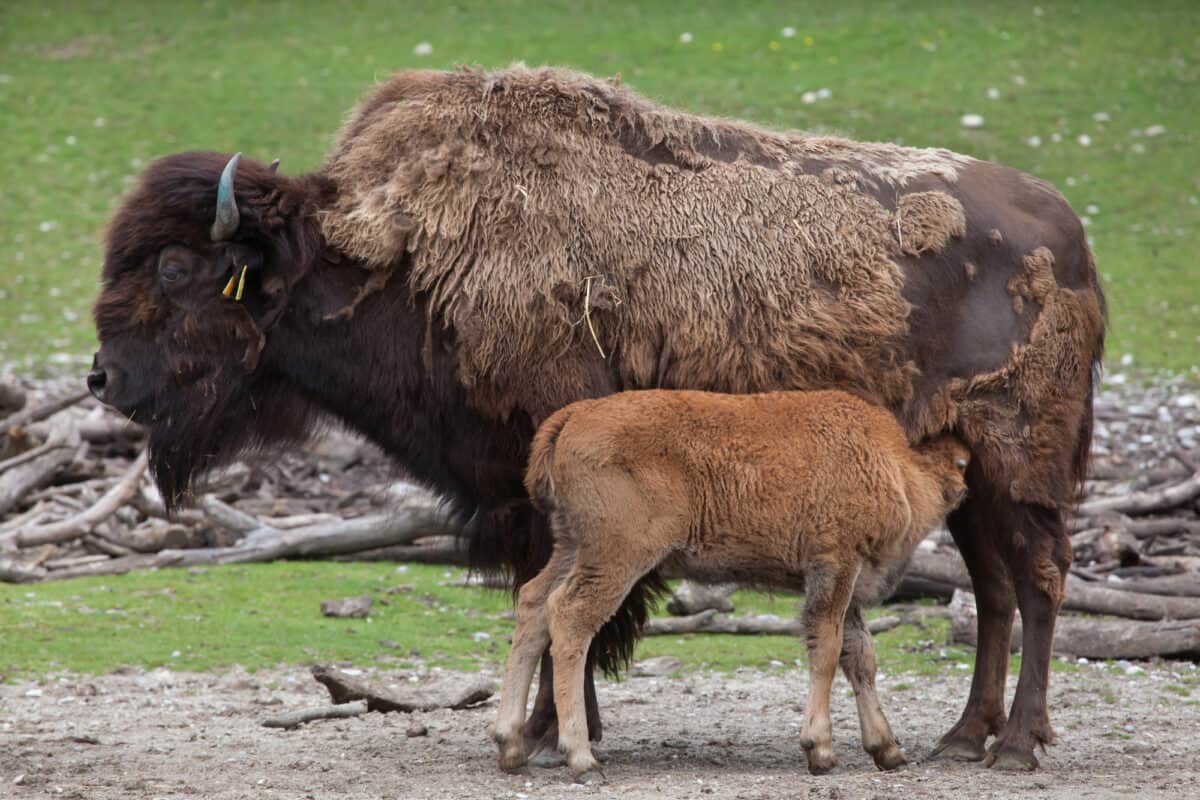
Once a bison calf has successfully stood, usually within the first half-hour of life, it quickly progresses to walking. The transition from standing to walking typically occurs within minutes, not hours. The first steps are often unsteady and experimental, with the calf learning to coordinate its four legs in the proper sequence. The mother remains close, often circling the calf and providing physical guidance. This walking phase is remarkably brief compared to other hoofed mammals, often lasting only 30-60 minutes before the calf attempts more rapid movement.
By the one-hour mark, most calves have begun transitioning to a trotting gait, where diagonal pairs of legs move in synchronization. This coordinated movement demonstrates the rapid neural development occurring as the calf practices these movements. By two hours after birth, many calves attempt their first true running motions—brief bursts where all four feet may leave the ground simultaneously. The progression from standing to basic running within such a compressed timeframe represents one of the most accelerated motor development sequences in the mammalian world, highlighting the extraordinary evolutionary adaptations that allow these animals to survive in environments where mobility equals survival.
Imprinting and Recognition

While learning to run, bison calves simultaneously undergo a critical imprinting process with their mothers. Within the first 20-30 minutes after birth, mother and calf develop recognition through scent, sound, and sight. The cow’s distinct vocalizations—low, rumbling calls—help the calf identify its mother among the herd. Similarly, the mother memorizes her calf’s unique scent during the initial grooming process. This mutual recognition is crucial because when danger threatens, a calf must quickly locate and follow its specific mother rather than becoming lost in the chaos of a moving herd.
This imprinting process includes the calf learning to respond to its mother’s movements and signals. When the mother shifts position or begins walking, the calf instinctively follows, providing natural opportunities to practice its developing locomotion skills. Researchers have observed that calves appear to watch their mothers’ leg movements and mimic them, suggesting an observational learning component alongside their innate abilities. This combination of strong maternal bonding and movement mimicry creates a natural apprenticeship that accelerates the calf’s running proficiency during those critical first hours.
The Role of Herd Dynamics

The social structure of bison herds plays a significant role in protecting calves while they master running. Adult bison, particularly females, form a protective circle around newborns when predators approach. This defensive formation buys precious time for wobbly new calves to improve their mobility skills. Additionally, the presence of slightly older calves (days or weeks old) provides models for newborns to observe and imitate. Researchers have documented that calves born into larger herds with multiple calves often develop running skills slightly faster than those in smaller groups.
The herd also provides graduated “practice sessions” for developing calves. As the group makes its daily movements to grazing areas or water sources, calves must keep pace. These movements typically begin slowly in the morning, gradually increasing in speed and distance throughout the day. This natural progression creates an ideal training regimen that builds endurance and coordination. By the end of their first day of life, most bison calves have traveled several miles with the herd, each step strengthening their running abilities and solidifying the neural pathways that control movement.
Energy Management and Nutrition
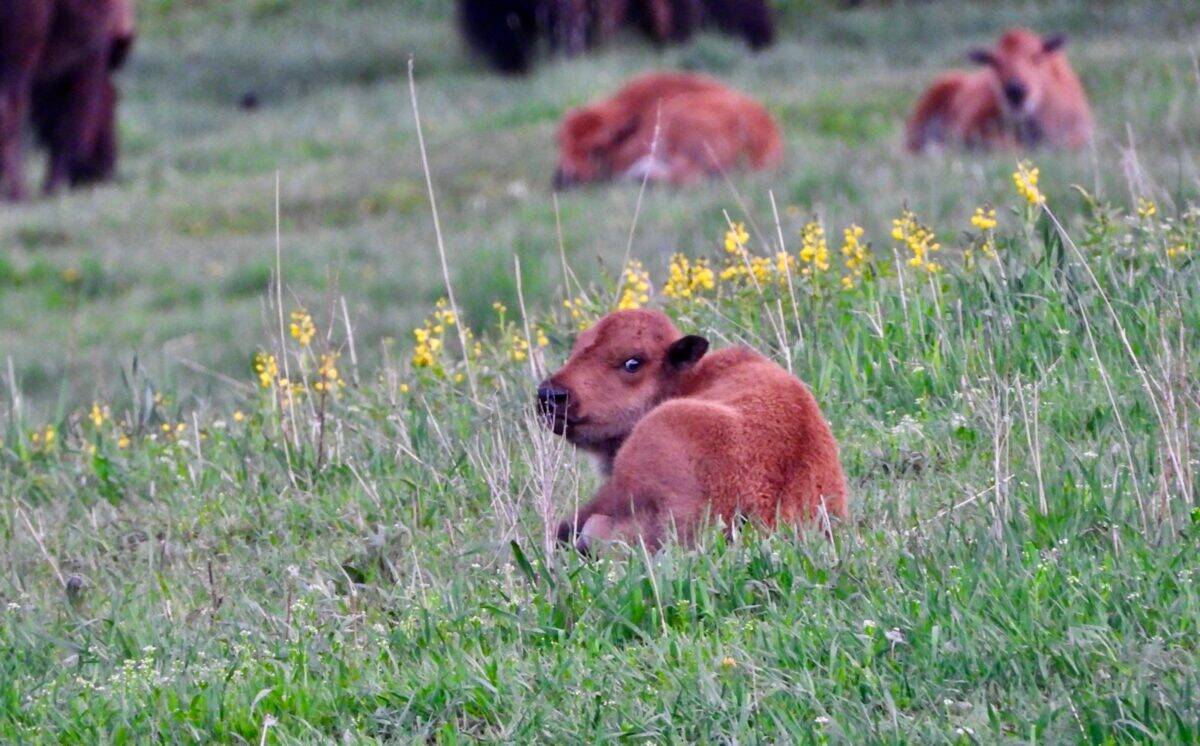
Supporting the remarkable physical feats of newborn bison calves requires substantial energy, delivered through specialized nutritional adaptations. Bison milk contains approximately 5.9-9.5% fat and 5.7-5.9% protein—significantly higher concentrations than those found in milk from domestic cattle. This nutrient-dense milk provides the immediate energy required for the calf’s intense physical activity. Newborn calves nurse frequently during their first day, usually every 20-30 minutes, to fuel their rapidly developing muscles and nervous system.
Interestingly, bison calves are born with higher proportions of brown fat—a specialized tissue that generates heat and rapidly releases energy—than many other ungulates. This metabolic adaptation allows them to maintain the high energy output necessary for running while still managing their body temperature in often challenging prairie conditions. Additionally, their digestive systems mature quickly, with calves beginning to sample vegetation as early as their first week, supplementing their milk diet with additional nutrients that support muscular development and energy needs as they continue to refine their running abilities.
Predator Evasion Strategies
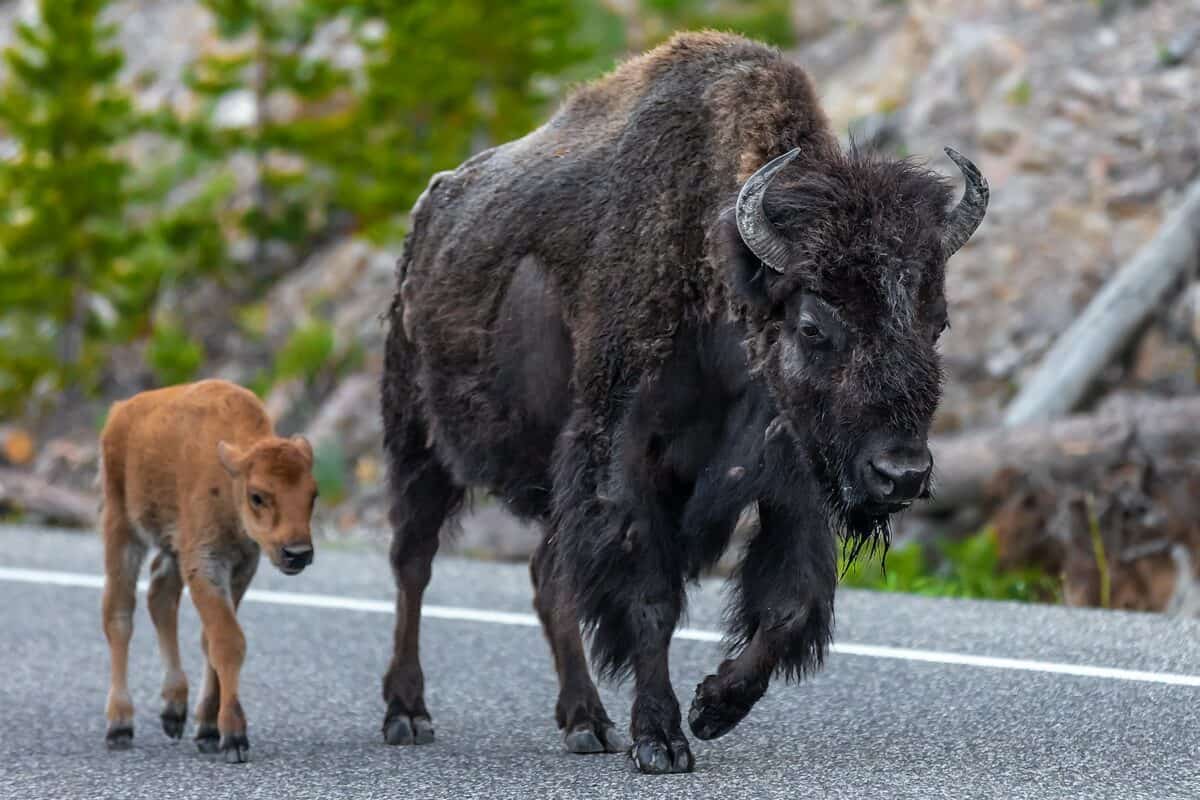
The ability to run within hours of birth directly connects to sophisticated predator evasion tactics that begin developing almost immediately. By their first day of life, bison calves display rudimentary versions of the zigzag running pattern that adult bison use to evade predators. This instinctive movement pattern makes them more difficult targets for predators like wolves and coyotes. Remarkably, studies have shown that even day-old calves can sustain speeds of 25-30 mph (40-48 km/h) for short bursts when threatened, though they tire more quickly than adults.
Calves also quickly learn to respond to the herd’s alarm signals. Within the first day, they become sensitized to warning vocalizations from adult bison and react by moving closer to their mothers and preparing to run. Researchers have observed that by 24 hours after birth, most calves demonstrate the ability to respond appropriately to different levels of threat: moving closer to adults during minor disturbances or running alongside their mothers when the danger is imminent. This rapid development of both physical running ability and the cognitive understanding of when to deploy it represents a remarkable survival adaptation.
Comparative Development Among Ungulates

When compared to other hoofed mammals (ungulates), bison calves demonstrate particularly accelerated motor development. Domestic cattle calves, their closest relatives, typically take 1-2 hours to stand successfully and 4-5 hours before attempting to run. Wildebeest calves, often cited as examples of precocial development, usually require 5-7 minutes to stand and about 30-40 minutes before running—impressive but still not as rapid as bison. Deer fawns, though able to stand within 30 minutes, generally remain hidden for days rather than immediately joining mobile herds.
These differences reflect varying evolutionary strategies. Forest-dwelling ungulates like deer evolved hiding strategies, where camouflaged young remain motionless to avoid detection. In contrast, plains-dwelling herding animals evolved mobility-based survival strategies, with bison representing the extreme end of this spectrum. The open habitat, social structure, and predator pressures of the North American plains created the perfect evolutionary conditions for the ultra-rapid development of running abilities that we observe in bison calves today. This comparative perspective highlights just how remarkable bison calf development truly is among mammals.
Conservation Implications
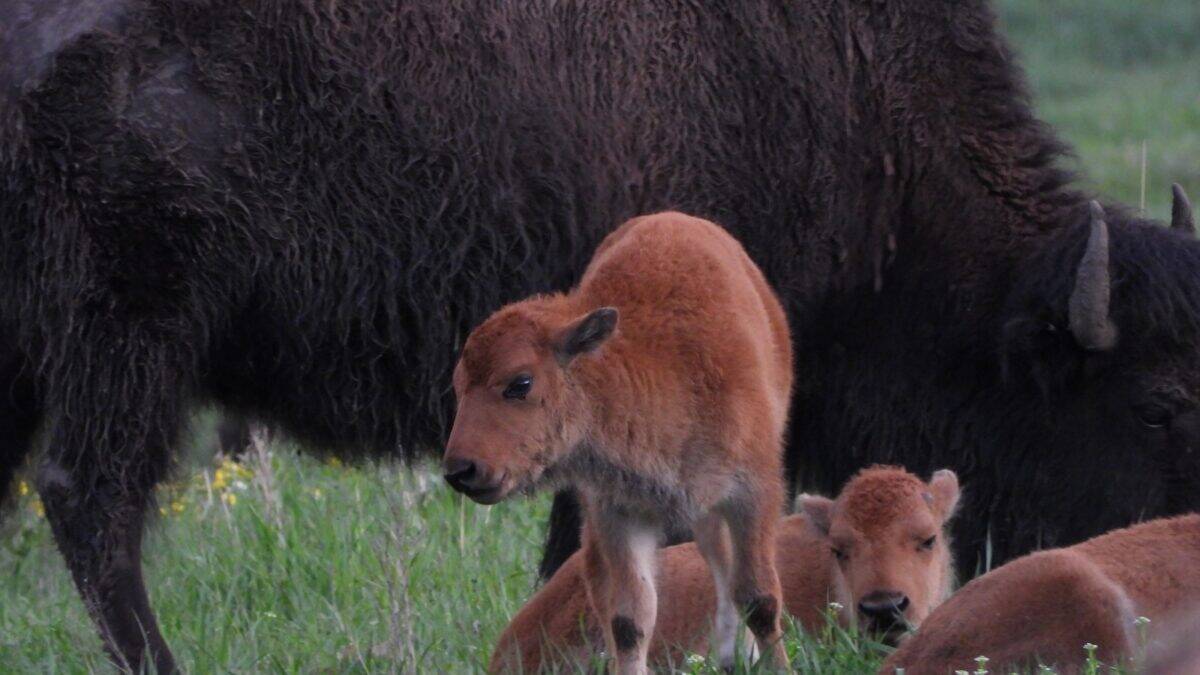
Understanding the extraordinary developmental abilities of bison calves has important implications for conservation efforts. As bison populations are restored to portions of their historical range, conservation biologists monitor calf development as an indicator of herd health. In properly functioning ecosystems with adequate nutrition and appropriate habitat, calves demonstrate the rapid running development described throughout this article. Delays in these milestones can serve as early warning signs of nutritional deficiencies, genetic issues, or environmental stressors affecting the herd.
For reintroduction programs, the knowledge that bison calves require open space to practice their running skills informs habitat selection. Conservation areas must provide sufficient open terrain for herds with calves to move freely and engage in natural behaviors. Additionally, the timing of births becomes an important management consideration—ensuring calves are born during seasons with optimal forage availability to support both mothers’ milk production and the intense energy needs of rapidly developing calves. By preserving the conditions that allow for this remarkable developmental timeline, conservation efforts help ensure that future generations will witness the awe-inspiring sight of day-old bison calves running alongside their mothers.
Conclusion: Nature’s Extraordinary Achievement
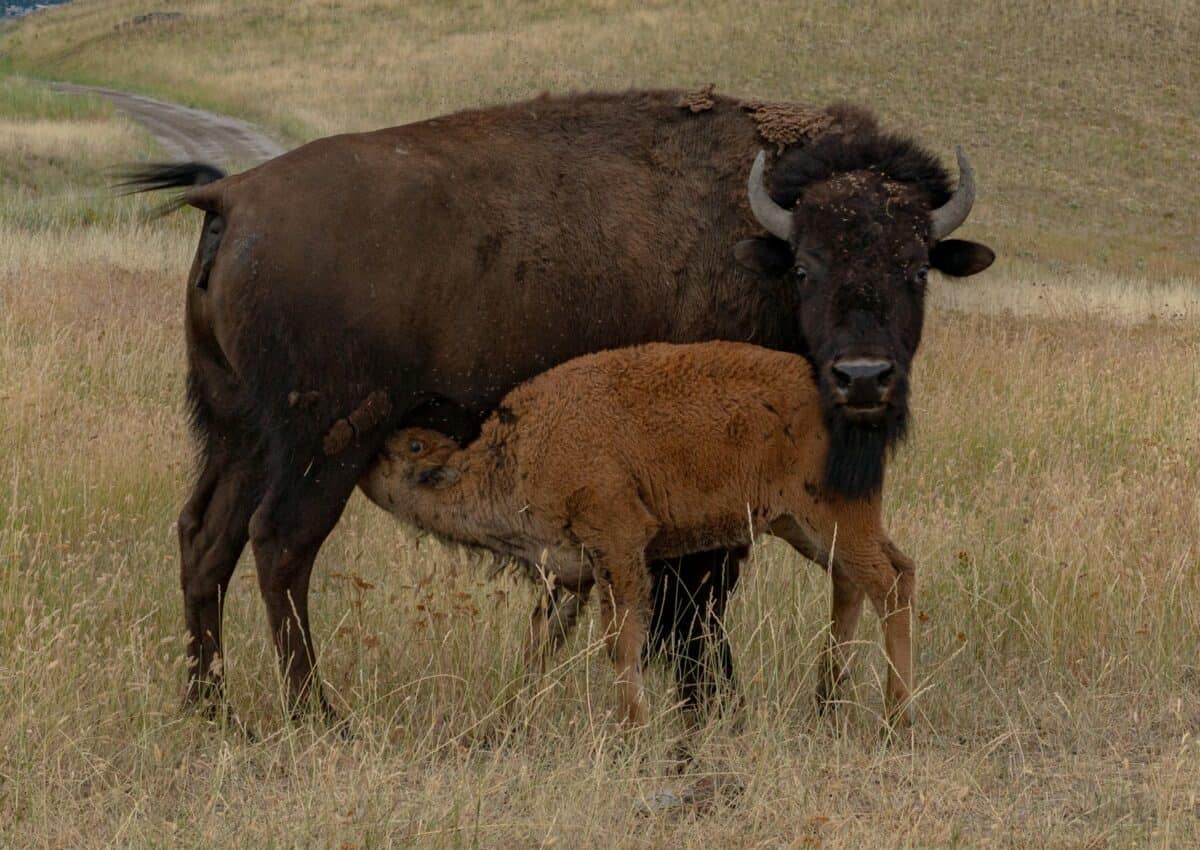
The ability of bison calves to run within hours of birth stands as one of nature’s most remarkable evolutionary achievements. Through specialized neurological, muscular, and skeletal adaptations, these young animals compress what would be weeks of development in other species into mere hours. This accelerated timeline isn’t just biologically fascinating—it represents a perfectly calibrated survival strategy shaped by millennia of life on the North American plains, where mobility means life and delay could mean death.
As we reflect on this extraordinary capability, we gain perspective on the intricate ways evolutionary pressures shape species’ development. The bison calf’s rapid transition from birth to running exemplifies how natural selection can produce seemingly miraculous adaptations when survival demands it. For conservation biologists, wildlife managers, and anyone fortunate enough to witness newborn bison in the wild, this phenomenon provides a window into the sophisticated ways animals adapt to their environments.
In our modern world, where many natural processes have been altered or interrupted, the sight of a wobbly bison calf taking its first running strides just hours after entering the world connects us to the ancient rhythms of the American prairie. It reminds us that some natural wonders persist despite changing landscapes and challenges, continuing just as they have for thousands of years. This remarkable developmental achievement deserves both our scientific appreciation and our commitment to preserving the conditions that allow it to continue for generations to come.
As we work to restore bison to more of their historical range, we’re not just conserving a species but preserving one of nature’s most impressive developmental feats—a reminder of what evolution can accomplish when shaped by the unforgiving but beautiful realities of life on the open plains.
- How Baby Giraffes Learn to Walk Within Hours - August 16, 2025
- Why We Need to Save The Cross Gorilla, The Most Endangered Primate in The World - August 16, 2025
- This Snake Can Climb Glass Walls - August 16, 2025

